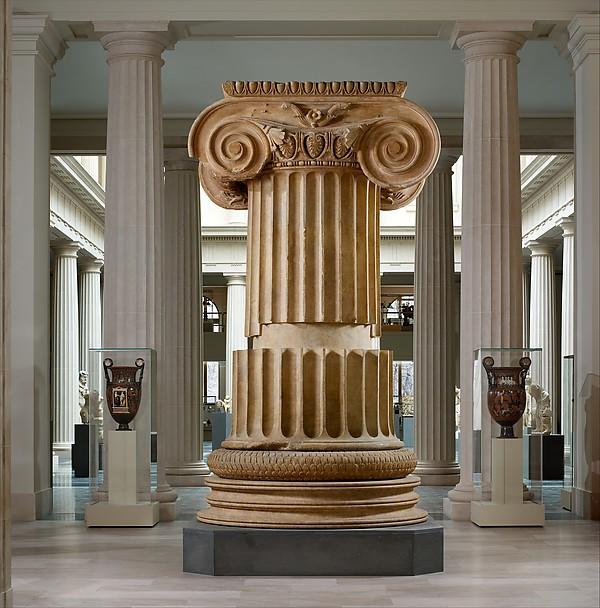
There is a range of ancient Greek architectural forms that interest researchers due to their unique appearance and technical properties. When it comes to the importance of ancient Greek architectural trends, it needs to be said that many of them still inspire modern architects who use various materials and techniques to perform architectural stylization that helps to attract tourists and pay homage to ancient creators. The example of ancient Greek architecture that is discussed within the frame of the assignment is the marble column from Sardis (see Pic. 1).
The given work of art presents one of the brightest examples of unique architectural trends that were popular in Greece during the Hellenistic period that was after the reign of Alexander the Great. The given fragment is supposed to have been one of the supporting columns that were used in the temple that was built in Sardis. The discussed architectural work presents a classic example of Greek columns that were created to fulfil two important tasks. On the one hand, Greek columns were used to make buildings more stable and support roofs. In addition, the opportunity to introduce a great number of decorative elements made Greek columns a unique architectural feature making buildings more attractive. The column that is located in the museum in the United States is Ionic. When it comes to the unique features of Ionic columns, it needs to be said that they are a bit lighter and thinner than columns that are built in accordance with architectural principles that were popular during other periods of ancient Greek history. The column has three parts that include the base, the column shaft, and the head.
As for the origins of the example that is discussed, the column was a part of the temple of Artemis that was built in Sardis by Greek people. The building is believed to have been created more than 2300 years ago. The construction works started with the beginning of the reign of Seleucus I who had been among the servitors of Alexander the Great. The personalities of the particular people who took part in the creation of the temple are still unknown. Similarly, it is not clear whether all elements of the temple were manufactured in Sardis or delivered from other cities. It was necessary to put a lot of effort to produce each column as all the decorative elements were manufactured with the help of hand carving. The given building was one of the largest ancient temples in the world; its size was even bigger than that of Parthenon in Athens. A few centuries after the construction was completed, the temple and the entire city were destroyed due to a series of earth shocks.
Ionic columns and other types of ancient Greek columns still inspire modern architectures who often use this style in order to attract more tourists and make modern buildings more unique. Apart from that, Greek columns can be used in government buildings as this style is also associated with power. One of the modern architectural works that have Ionic columns as one of its elements is the Wellcome Building located in London; the building was created in the 1930s (“The Wellcome Building,” n.d.). Nowadays, it hosts libraries and galleries. It has a modern European design and columns act only as decorative elements. Apparently, the majority of people tend to associate ancient Greece with the development of art and science, and this is why ancient architectural elements still look essential if they are used in buildings where the meetings of people related to art are held.
References
Marble column from the Temple of Artemis at Sardis. (n.d.). Web.
The Wellcome Building. (n.d.). Web.